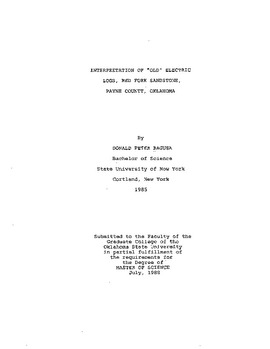| dc.description.abstract | The interpretation of "old" electric logs seems to be as much an art as a science. An "expert" with old logs is someone who knows how the tools operated and who knows their limitations, who knows how to select apparent resistivity values from the logs, who has mastered analytical methods and knows the limitations of the analytical methods, and who has acquired additional ability empirically. Many geologic factors contribute an added degree of complexity to the interpretation of old electric logs. As a consequence, an "expert" with these old logs may be uncommonly effective in an area where he is well acquainted with the subsurface geology, geologic setting, individual reservoirs' character, and stratigraphic column. Development of a fairly easy, robust method to interpret old electric logs is a desired result of this research. In order to refine the problem to manageable proportions, "old" electric logs is limited to logs composed of an Spontaneous Potential (SP) curve, Short Normal (16-inch) curve, Long Normal (64-inch) curve, and Lateral (18-foot 8-inch) curve. The study is also limited to the Red Fork Sandstone of Payne County, Oklahoma. Calculation of water-saturation in a direct manner using the Archie Equation is possible only if reliable values of porosity (and hence formation factor), Rw, and Rt can be obtained. Obtaining accurate estimates of porosity and Rt from old electric logs is not straightforward. If reliable estimates of porosity and Rw for a specific formation could be obtained from sources other than the old electric logs, these values could be used in the Archie Equation with Rt obtained from old electric logs, to calculate an estimate of water saturation. In doing so, the assumption of transferability of measurements of porosity and Rw is necessary. To be able to estimate water-saturation reliably from old electric logs without assuming values of porosity or Rw obviously would be advantageous. Where the Red Fork Sandstone of Payne County, Oklahoma is concerned, use of Ri-Rt Conversion Charts (Lane Wells, Inc., 1956) in conjunction with a Saturation Chart (specifically developed for the Red Fork Sandstone) seems to yield favorable results. This method permits the estimation of water saturation from old electric logs without the assumtion of values for porosity or Rw. | |
